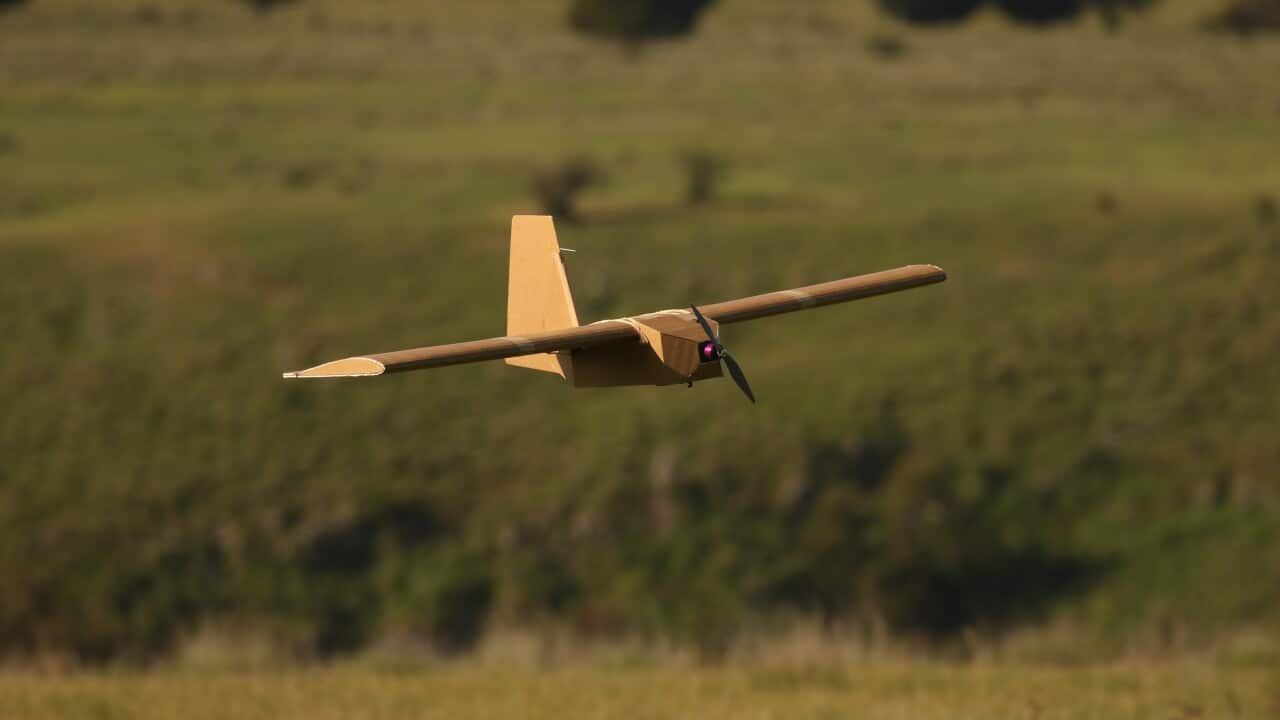Officials in Moscow have accused Ukraine of using Australian drones to attack Russian territory.
"Australian drones are actually used to strike targets in Russia," Russian foreign ministry spokeswoman Maria Zakharova said in an online post, adding that Australia is being drawn into the conflict.
Zakharova accused the Australian government of "enthusiastically contributing to the anti-Russian campaign directed from Washington" while trying to hide from public opinion "the unenviable circumstances indicating that Australia is increasingly being drawn into the conflict in Ukraine".
The drones are manufactured by Australian company SYPAQ and cost around US$3,500 ($5,300).
Australia has been supplying Ukraine with 100 of the drones per month from March this year, according to the Australian Army Defence Innovation Hub.
They could have a significant effect on this war and military technology in general, professor in intelligence studies and international security at Australian National University John Blaxland told SBS News.

Russian foreign ministry spokeswoman Maria Zakharova accused the Australian government of "enthusiastically contributing to the anti-Russian campaign directed from Washington". Credit: AP/Russian Foreign Ministry Press Service
"Anybody with a little bit of nous a little bit of tech savvy, and some initiative can access this technology."
It's got "enormous ramifications, not just for Ukraine, but around the world," Blaxland said because the design and technology are so simple and could be used for delivery by commercial operators.
How do the Australian cardboard drones work?
They can carry 5kg of weight and have a wingspan of two metres.
They can fly at up to 60 km/h and have a range of 120km.
The waxed cardboard has been used so it is harder for radar to detect than metal drones, and the material is also weather resistant and can be flat-packed.
The drone also has surveillance potential, with Ukrainian fighters able to insert cameras in the body.
"It's like a high school kid's model aeroplane, with a shoebox-sized cavity in the middle in which you can stick whatever you like... but it's obviously more sophisticated because it's got range, you can control it, and you can operate it in a fairly hostile environment," Blaxland said.
What will the impact of the drones be on the Russia-Ukraine conflict?
There are many potential uses for the drones, because they can be easily produced, and land in small spaces, Blaxland said.
"It's clearly gone under the radar of the Russians, and it's massively popular with Ukrainian fighters."
He said the Australian Defence Force should be thinking about what they can do in the drone space and how they could help Ukraine.
Former director of the Joint Intelligence Organisation of Australia, Paul Dibb, told SBS News the fact the drones are cardboard makes them vulnerable, and they can't carry many explosives.
"If they can be targeted, at particular Russian individuals, they might come in useful. But we've got to remember in the Soviet Union days, Ukraine was the biggest single manufacturer in the USSR of military equipment, including intercontinental ballistic missiles, and fighter and bomber aircraft and so on.
"So this is not to sort of dismiss any small contribution we can make. But we're never going to make a decisive difference."
What has Australia's contribution to the war effort been?
In July 2022, Prime Minister Anthony Albanese pledged to provide armoured personnel carriers, Bushmaster vehicles and drones to Ukraine during a visit to Kyiv.
In February this year - on the first anniversary of the Russian invasion of Ukraine - the Australian government again said it was providing drones to Ukraine to help it resist Russian forces.
"These systems provide a battlefield intelligence, surveillance and reconnaissance capability for the Ukrainian Armed Forces as they continue to fight," the Australian government said in a statement at the time.
Ukrainian ambassador to Australia Vasyl Myroshnychenko posted a link on social media platform X last week to an article in The Age that suggested Australian-made "cardboard drones" were used in a strike on the Kursk airfield inside Russia in late August.
Myroshnychenko tweeted that the site "was a 'legitimate target' for Ukraine's armed forces... Russia uses that airport to launch military operations and send missiles into Ukraine".
Australia has supported Ukraine with $790 million worth of aid, including $610 million in military equipment, since the 24 February 2022 Russian invasion.
Dibb said pressure on Australia to produce more Bushmasters was pointless as manufacturing capabilities are so limited.
"We don't have a big defence industry ... there's one production line down in Bendigo and we don't have manufacturing industries in the size European countries do."
- With additional reporting by AAP



